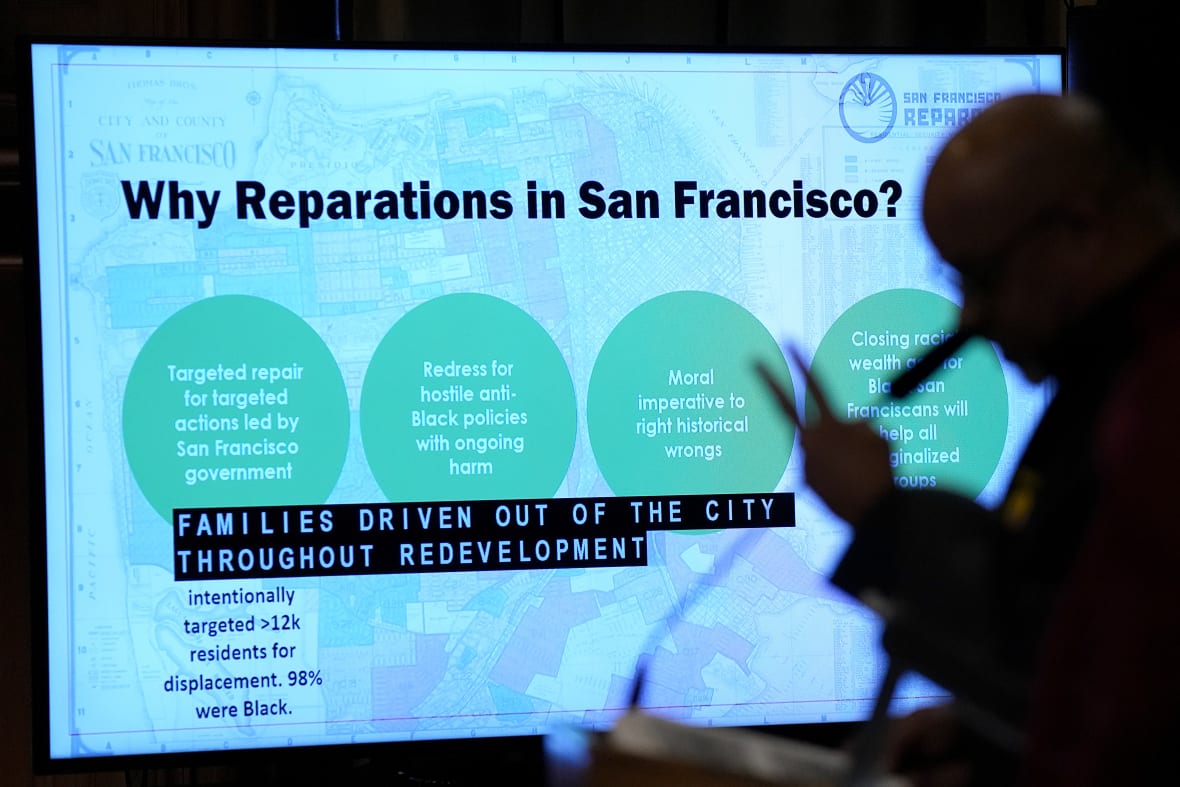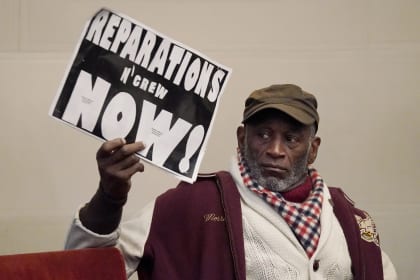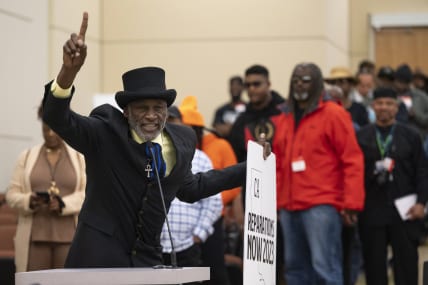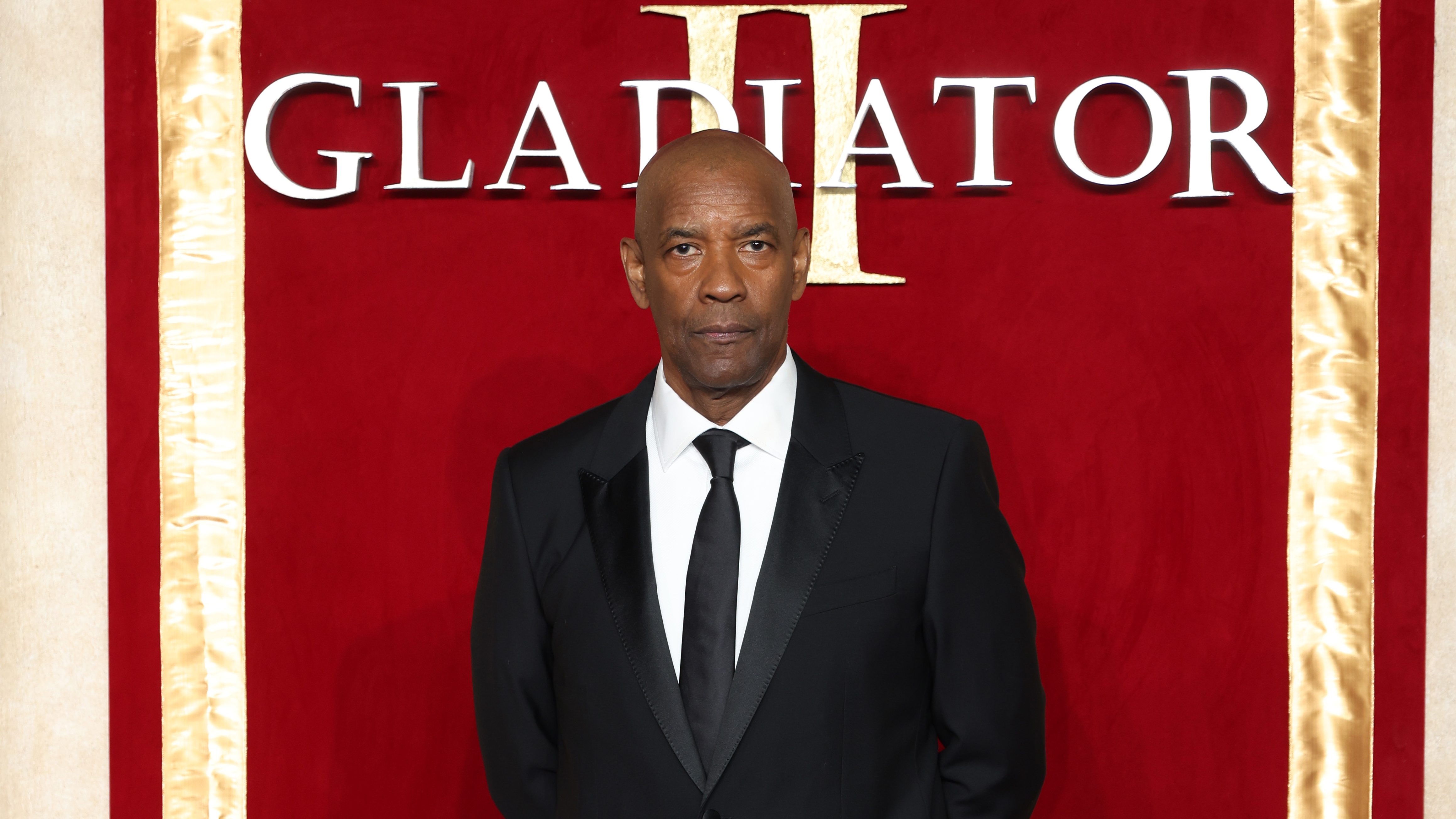SAN FRANCISCO (AP) — San Francisco supervisors have backed the idea of paying reparations to Black people, but whether members will agree to lump-sum payments of $5 million to every eligible person or to any of the more than 100 other recommendations made by an advisory committee won’t be known until later this year.
The idea of Black reparations is not new, but the federal government’s promise of granting 40 acres and a mule to newly freed slaves was never realized. It wasn’t until George Floyd, a Black man, was killed in police custody in 2020 that reparations movements began spreading in earnest across the country.
The state of California and the cities of Boston and San Francisco are among jurisdictions trying to atone not just for chattel slavery, but for decades of racist policies and laws that systemically denied Black Americans access to property, education and the ability to build generational wealth.
What is the argument for reparations in San Francisco?
Black migration to San Francisco soared in the 1940s because of shipyard work, but racially restrictive covenants and redlining limited where people could live. When Black residents were able to build a thriving neighborhood in the Fillmore, government redevelopment plans in the 1960s forced out residents, stripped them of their property and decimated Black-owned businesses, advocates say.
Today, fewer than 6% of San Francisco residents are Black yet they make up nearly 40% of the city’s homeless population.
Supporters include the San Francisco NAACP, although it said the board should reject the $5 million payments and focus instead on reparations through education, jobs, housing, health care and a cultural center for Black people in San Francisco. The president of the San Francisco branch is the Rev. Amos C. Brown, who sits on both the statewide and San Francisco reparations panels.
What is the argument against reparations?
Critics say California and San Francisco never endorsed chattel slavery, and there is no one alive today who owned slaves or was enslaved. It is not fair for municipal taxpayers, some of whom are immigrants, to shoulder the cost of structural racism and discriminatory government policies, critics say.
An estimate from Stanford University’s Hoover Institution, which leans conservative, has said it would cost each non-Black family in San Francisco at least $600,000 in taxes to pay for the costliest of the recommendations: The $5 million per-person payout, guaranteed income of at least $97,000 a year for 250 years, personal debt elimination and converting public housing into condos to sell for $1.
 Eric McDonnell, chair of the African American Reparations Advisory Committee, speaks during a special Board of Supervisors hearing about reparations in San Francisco, Tuesday, March 14, 2023. Supervisors in San Francisco are taking up a draft reparations proposal that includes a $5 million lump-sum payment for every eligible Black person. (AP Photo/Jeff Chiu)
Eric McDonnell, chair of the African American Reparations Advisory Committee, speaks during a special Board of Supervisors hearing about reparations in San Francisco, Tuesday, March 14, 2023. Supervisors in San Francisco are taking up a draft reparations proposal that includes a $5 million lump-sum payment for every eligible Black person. (AP Photo/Jeff Chiu)A 2022 Pew Research Center survey found 68% of U.S. respondents opposed reparations compared with 30% in favor. Nearly 80% of Black people surveyed supported reparations. More than 90% of Republicans or those leaning Republican opposed reparations while Democrats and those leaning Democratic were divided.
How will San Francisco pay for this?
It’s not clear. The advisory committee that made the recommendations says it is not its job to figure out how to finance San Francisco’s atonement and repair.
That would be up to local politicians, two of whom expressed interest Tuesday in taking the issue to voters. San Francisco Supervisor Matt Dorsey said he would back a ballot measure to enshrine reparations in the San Francisco charter as part of the budget. Shamann Walton, the supervisor leading the charge on reparations, supports that idea.
What are some of the other reparations recommendations?
Recommendations in education include establishing an Afrocentric K-12 school in San Francisco; hiring and retaining Black teachers; mandating a core Black history and culture curriculum; and offering cash to at-risk students for hitting educational benchmarks.
Recommendations in health include free mental health, prenatal care and rehab treatment for impoverished Black San Franciscans, victims of violent crimes and formerly incarcerated people.
The advisory committee also recommends prioritizing Black San Franciscans for job opportunities and training, as well as finding ways to incubate Black businesses.
What happens next?
There is no deadline for supervisors to agree on a path forward. The board next plans to discuss reparations proposals in September, after the San Francisco African American Reparations Advisory Committee issues a final report in June.
What about reparations from the state?
In 2020, California became the first state to form a reparations task force. But nearly two years into its work, it still has yet to make key decisions on who would be eligible for payment and how much. The task force has a July 1 deadline to submit a final report of its reparations recommendations, which would then be drafted into legislation for lawmakers to consider.
The task force has spent multiple meetings discussing time frames and payment calculations for five harms experienced by Black people, including government taking of property, housing discrimination and homelessness and mass incarceration. The task force is also debating state residency requirements.
Previously, the state committee voted to limit financial reparations to people descended from enslaved or freed Black people in the U.S. as of the 19th century.
TheGrio is now on your TV via Apple TV, Amazon Fire, Roku, and Android TV. Also, please download theGrio mobile apps today!
.png)











 English (US) ·
English (US) ·